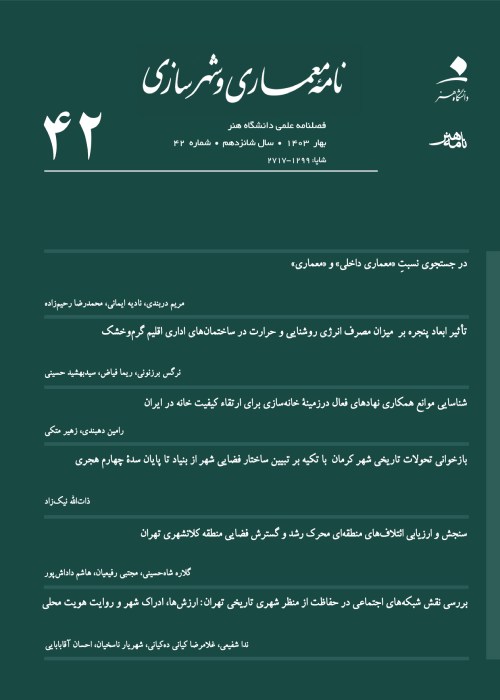Rereading the Historical Developments of Kerman City Emphasizing the Explanation of the Spatial Structure of the City from the Foundation to the End of the 4th Hijri Century
Author(s):
Article Type:
Research/Original Article (دارای رتبه معتبر)
Abstract:
The city of Kerman was founded in ancient times. This city, like many cities, has changed along with historical events, and that's why the reading of the distant past of the city is associated with a lot of ambiguity, which is related to the lack of sources, documents and evidence. The majority of the knowledge about the urban characteristics of Kerman is related to the Safavid and Qajar periods, as many repairs and transformations occurred in the city in these later eras. Urban development and constructions of these periods mainly replaced older buildings and spaces and did not leave many traces of the past. In this article, the developments of the city until the fifth Hijri century are examined, which includes before the Sassanid kingdom until the reign of the Samanids and Byyieds in the Kerman region. The questions are: How and with what pattern did the developments in the city of Kerman occur from its foundation to the fifth Hijri century? And what spatial composition and elements did the city have in each period? The study of Kerman's foundation and urban developments is carried out with the interpretive-historical method and by searching in historical books and examining architectural and urban evidence and remains. Historical reports are vague and general, and as a result, they need precision and interpretation so that urban concepts can be extracted from them. Also, the evidence left from the discussed periods is very little. The aim of the research is to understand the spatial structure of the city in each period and the pattern of its changes. The city of Kerman with the name "Beh-Ardeshir" was built during the time of Ardeshir Babkan on an old village. This work was done by building fortresses on a hill and building a walled city in the eastern area of the plain. This city was in the chain of early Sassanid cities. From the beginning, the city had an economic and defensive position. The spatial structure of Beh Ardeshir with minor changes in architectural and urban elements and social context was preserved until the first Hijri centuries. Except for the addition of the Jame Atiq Mosque and some other buildings, they did not bring about a significant change in the shape and design of the city. In the 4th Hijri century, when this city became the center of the region under the Samanid ruler's control, it experienced further developments and expansions. From this point, the spatial organization of the city included fortresses, Sharstan (enclosed by a fence) with four gates on four sides, gardens connected to the city and villages around where people lived and worked. This development marks a step towards the growth and development of the spatial and physical organization of the city, which had laid the groundwork for the development of Kerman city in the following periods.
Keywords:
Language:
Persian
Published:
Journal of Architecture and Urban Planning, Volume:16 Issue: 42, 2024
Pages:
65 to 86
magiran.com/p2707798
دانلود و مطالعه متن این مقاله با یکی از روشهای زیر امکان پذیر است:
اشتراک شخصی
با عضویت و پرداخت آنلاین حق اشتراک یکساله به مبلغ 1,390,000ريال میتوانید 70 عنوان مطلب دانلود کنید!
اشتراک سازمانی
به کتابخانه دانشگاه یا محل کار خود پیشنهاد کنید تا اشتراک سازمانی این پایگاه را برای دسترسی نامحدود همه کاربران به متن مطالب تهیه نمایند!
توجه!
- حق عضویت دریافتی صرف حمایت از نشریات عضو و نگهداری، تکمیل و توسعه مگیران میشود.
- پرداخت حق اشتراک و دانلود مقالات اجازه بازنشر آن در سایر رسانههای چاپی و دیجیتال را به کاربر نمیدهد.
In order to view content subscription is required
Personal subscription
Subscribe magiran.com for 70 € euros via PayPal and download 70 articles during a year.
Organization subscription
Please contact us to subscribe your university or library for unlimited access!



